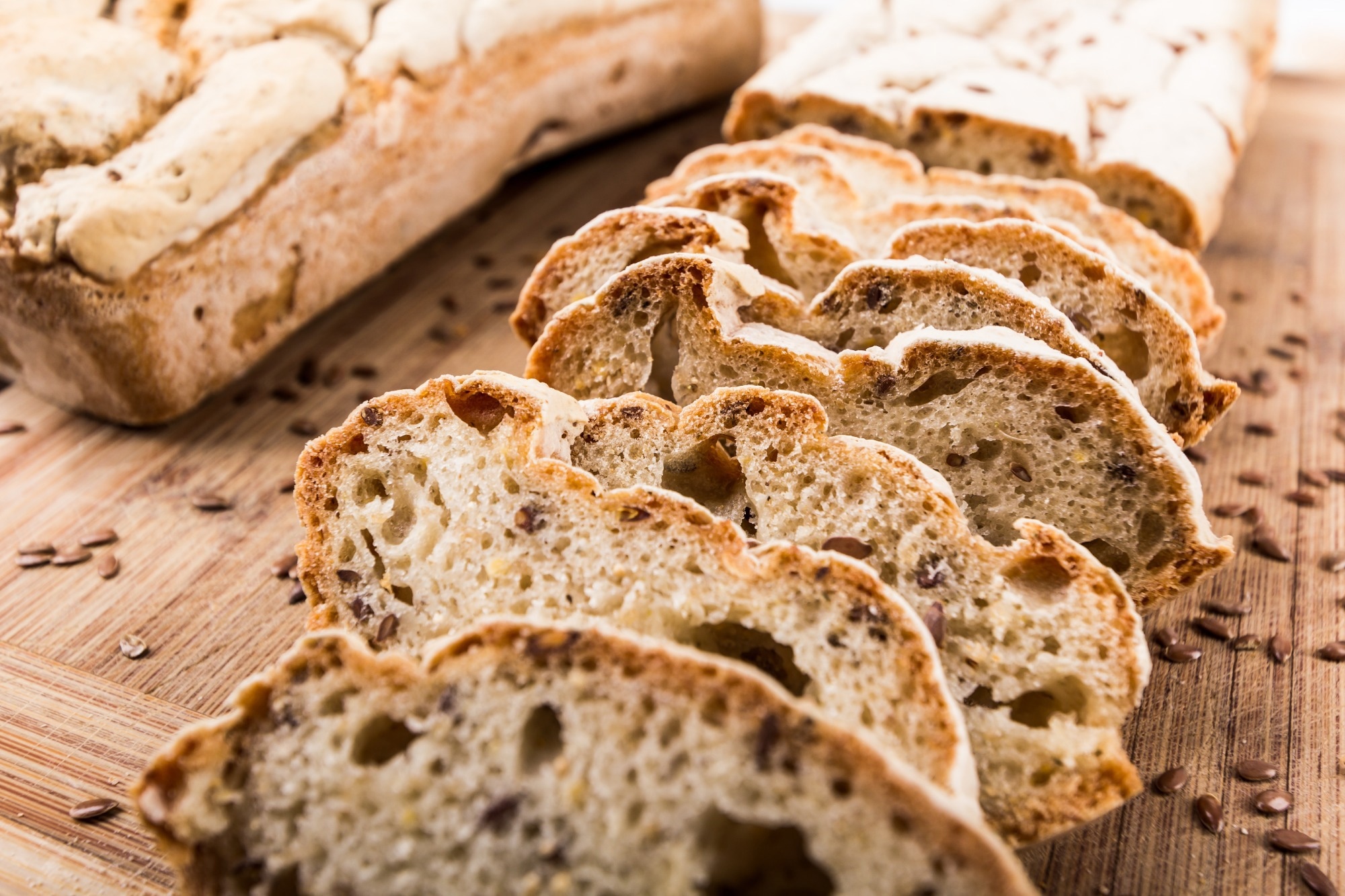In a recent study published in Foods, researchers evaluated the physicochemical, sensory, and spectroscopic characteristics of walnut flour (WF) as an ingredient for producing low-carbohydrate bread.
 Study: Walnut Flour as an Ingredient for Producing Low-Carbohydrate Bread: Physicochemical, Sensory, and Spectroscopic Characteristics. Image Credit: Katarzyna Wojtasik/Shutterstock.com
Study: Walnut Flour as an Ingredient for Producing Low-Carbohydrate Bread: Physicochemical, Sensory, and Spectroscopic Characteristics. Image Credit: Katarzyna Wojtasik/Shutterstock.com
Scientists are searching for gluten-free products made from alternative cereals to address the global population’s growing intolerance to gluten. They are exploring additives from various sources, such as walnuts with high health-promoting potential.
This is due to the growing demand for gluten-free ketogenic bakery products, which can improve glucose and lipid metabolism in diabetes mellitus type 2 patients. By incorporating plant-based ingredients, researchers can create high-quality, gluten-free products that meet the nutritional needs of consumers.
About the study
In the present study, researchers explored WF as an alternative for individuals on a gluten-free diet.
The researchers examined the physical, chemical, and sensory alterations in low-carbohydrate bread when it was supplemented with WF. Attenuated total reflection (ATR)-Fourier transform infrared spectroscopy (FTIR) spectra were used to investigate molecular-level alterations.
Buckwheat and flaxseed flours were enhanced with WF at values ranging from 5% to 20%. The bread's antioxidant capacity was assessed using 2,2-diphenyl-1-picrylhydrazyl (DPPH) and 2,2′-azino-bis-3-ethylbenzothiazoline-6-sulfonic) acid (ABTS).
Sodium salicylate, gallic acid, ferrozine, and ABTS were utilized as agents. The bread recipe called for buckwheat flour, flaxseed flour, and partly defatted WF (27% carbohydrates, 16% fat, and 48% protein), as well as psyllium, potato fiber, guar gum, Himalayan salt, and dry yeast.
Flour samples with equal amounts of flaxseed and buckwheat (50 g each) were weighed and sieved, followed by mixing with dried yeast, psyllium (4 g), salt (2 g), and guar gum (3 g). Water (130 mL) was incorporated from the faucet at ambient temperature into the samples.
Subsequent attempts with increasing quantities of walnut flour utilized fewer base flours (flaxseed and buckwheat flour) such that the total amount of flour was 100 grams. The bread dough was mixed for five minutes at 100 revolutions per minute, increasing subsequently to 200 revolutions per minute, and stirred for three minutes before being shaped into 120 grams and inserted in the loaf pans.
Dough fermentation procedures were repeated for one hour, 75% to 88% humidity and 30 °C. The bread samples were then wet using water, followed by placement in baking ovens.
The volume of the bread loaves was calculated based on the millet seed displacement technique. The color and pH of the bread crumbs were also tested. Round-shaped crumbs with a 28 mm diameter and 10 mm thickness were obtained, coded, and evaluated in an odor-free environment.
The sensory qualities of bread, such as taste, color, texture, fragrance, and general acceptability, were evaluated. The TPA test was used to evaluate the textural characteristics of bread crumbs after 24 and 48 hours of baking.
Results
WF addition to the bread significantly increased loaf volume, reinforced the dough structure, and reduced baking loss to 14% compared to the control bread. The bread with 20% WF had the maximum volume.
Protein concentration increased in 20% WF-fortified bread, remarkably from 23 g per 100 g dry mass (DM) in control bread to 35 g per 100 g DM in 20% WF bread. Furthermore, WF incorporation lowered the crumb brightness but increased redness and yellowness.
Likewise, the fat amount increased from 3.3 g to 7.3 g/100 g DM, whereas the carbohydrate content decreased from 22 g to 7.2 g/100 g DM. WF also enhanced crumb hardness and chewiness, likely due to WF interactions with the food matrix. FTIR spectral intensity showed changes in protein, carbohydrate, and fat content, with higher band intensity detected for proteins. Bread with 15% WF was recommended by the authors and was well-liked by consumers.
The 15% WF bread contained more phenolic compounds, fat, and protein by roughly 40%, 4%, and 8%, respectively. WF bread also had considerably greater antioxidant activity than control bread. WF fiber and protein had strong swelling and water retention properties, which contributed to the structural strengthening and ability to hold the fermentation gases of the bread crumbs.
In 20% WF bred, soluble and total fiber content were slightly decreased, with values of 31 and 45 g per 100 g DM, respectively. WF-fortified bread had a minor decrease in pH, indicating that walnut flour showed no chemical reaction with the components and did not influence the cid-base regulation.
The greater ash percentage caused by WF supplementation showed that the mineral content of the test samples had increased since walnuts are abundant in minerals such as calcium, magnesium, and potassium.
Bread samples with up to 10% WF added earned the best flavor evaluations, while those with 20% WF received the lowest. Wheat bread with up to 5% WF supplementation produced the best sensory outcomes. After 24 hours of storage, samples with a 20% WF concentration had the maximum hardness, whereas those with 15% and 20% WF had the highest hardness after 48 hours.
Conclusions
Overall, the study findings showed that replacing wheat bread with WF resulted in low-carbohydrate bread with lower baking loss and higher volume while maintaining desired sensory qualities. WF-enriched bread had an increased amount of protein, while carbohydrate and fat content were reduced. WF-fortified bread has redder, darker, and more yellow bread crumbs than the control bread.
WF incorporation enhanced antioxidant activity but also increased crumb chewiness and hardness. Researchers recommend 15% WF content for bread, which is recognized for its high sensory acceptance. WF-fortified bread also contained increased levels of phenolic compounds, fat, and protein. Further research is needed to determine shelf life and optimal storage conditions.